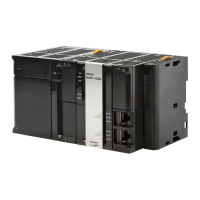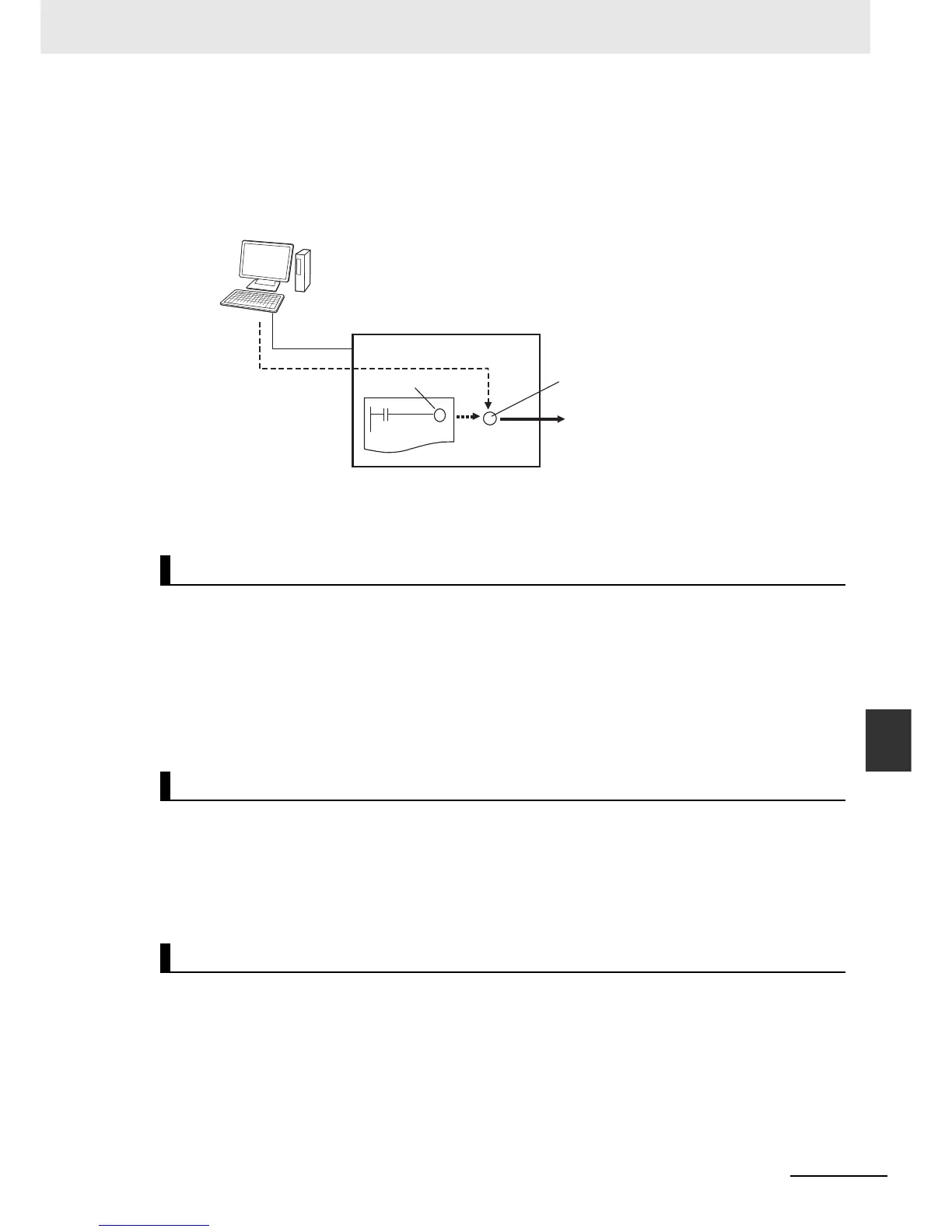8-31
8 CPU Unit Functions
NJ-series CPU Unit Software User’s Manual (W501)
8-5 Debugging
8
8-5-1 Forced Refreshing
Outputs
The I/O port and the output to the external device change to the status that is specified with forced
refreshing. In the user program, the status of the device variable that is assigned to the I/O port will
not necessarily be the status that was specified with forced refreshing. It will change with the results
of user program execution.
You can execute forced refreshing for the following I/O ports and memory used for CJ-series Units.
• I/O ports for EtherCAT slaves
• I/O ports for CJ-series Basic I/O Units
• I/O ports for CJ-series Special Units
• I/O bits for DeviceNet or CompoNet slaves that are specified for AT specifications from variables
If you execute forced refreshing from the Ladder Editor or the Watch Tab Page, the status of the I/O port
or memory element for a CJ-series Unit will change via the variable.
The number of variables that you can refresh with forced refreshing is listed below.
• CJ-series Units: 64 points total
• EtherCAT slaves: 64 points total
The number of external I/O points are given for the above limits. For example, if more than one variable
is assigned the same external I/O point as the AT specifications, it is counted as only one point.
Inputs
• To apply a simulated input signal to debug the user program
• To create a status that would occur only when a failure occurs (e.g., two exclusive bits turning ON or
OFF at the same time)
Applicable Areas
Number of Simultaneous I/O for Forced Refreshing
Application
Sysmac Studio
FALSE
TRUE
Device variable
TRUE
CPU Unit
I/O port
(1) Output changed to
TRUE with forced
refreshing.
(2) The I/O port and the output to the external
device change to TRUE. The device variable
changes with the result of user program
execution.

